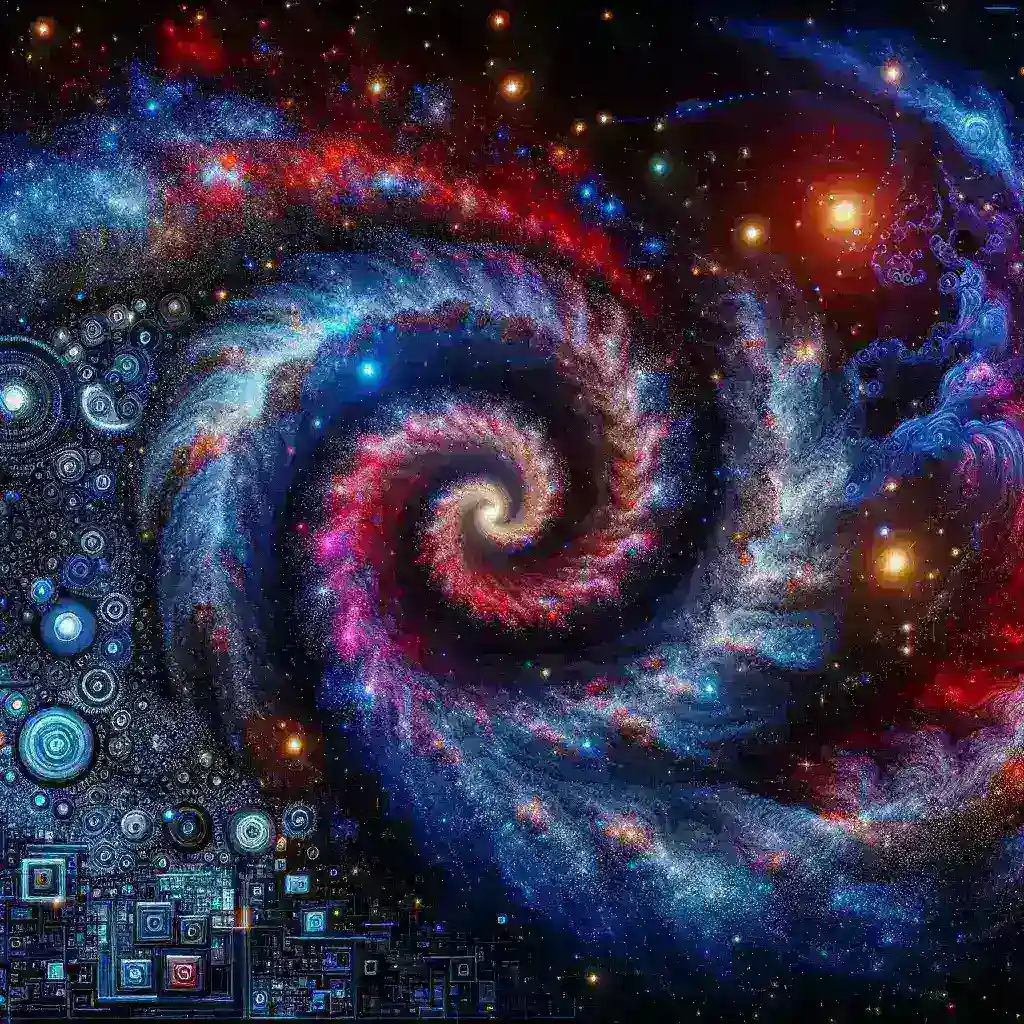Introduction
The universe is a vast, intricate puzzle, and understanding its formation and evolution is one of the greatest challenges in modern astrophysics. Recently, the application of artificial intelligence (AI) in astronomy has emerged as a powerful tool for simulating and understanding galaxy formation, particularly under modified gravity theories. This article delves into the nexus of AI and astronomy, focusing on how these advanced models contribute to our understanding of galaxy formation in the context of modified gravity.
Understanding Galaxy Formation
Galaxy formation is a complex process influenced by various factors, including dark matter, baryonic matter, and gravitational forces. Traditionally, the standard model of cosmology, known as the Lambda Cold Dark Matter (ΛCDM) model, has been the cornerstone of our understanding. However, modified gravity theories, which propose alternatives to traditional gravitational equations, have gained traction in recent years.
What Are Modified Gravity Theories?
Modified gravity theories suggest that the behavior of gravity might differ at cosmic scales compared to what is predicted by Newtonian physics and General Relativity. These theories aim to address some of the shortcomings of the ΛCDM model, particularly in explaining phenomena such as galaxy rotation curves and the accelerated expansion of the universe.
Key Modified Gravity Theories
- MOND (Modified Newtonian Dynamics): Proposes that gravity alters at low accelerations, explaining galaxy rotation without dark matter.
- TeVeS (Tensor-Vector-Scalar Gravity): Incorporates additional fields to modify the gravitational interaction.
- f(R) Gravity: Modifies the Einstein-Hilbert action to account for cosmic acceleration.
The Role of AI in Astronomy
The advent of AI has transformed numerous fields, and astronomy is no exception. AI algorithms are capable of processing vast amounts of data, identifying patterns, and making predictions that would be nearly impossible for human researchers to achieve alone.
AI Algorithms in Astronomy
AI techniques, including machine learning and neural networks, are increasingly employed to analyze observational data from telescopes and simulations. These algorithms can predict galaxy formation scenarios under different gravitational frameworks, providing insights that challenge or reinforce existing theories.
Applications of AI in Simulating Galaxy Formation
- Data Analysis: AI can analyze data from surveys and simulations, identifying the formation stages of galaxies.
- Predictive Modelling: Neural networks can predict galaxy formation outcomes based on various initial conditions and modified gravity theories.
- Optimization of Simulations: AI can optimize simulation parameters to improve the accuracy of galaxy formation models.
A Case Study: AI Models Simulating Galaxy Formation
One remarkable example of AI applied to galaxy formation is the study led by researchers at the University of California, which employed a deep learning algorithm to simulate the formation of galaxies in a modified gravity framework. Their model utilized a combination of observational data and theoretical predictions to create a comprehensive simulation.
Model Features
- Data Input: The model incorporated large datasets from galaxy surveys and theoretical constructs from modified gravity theories.
- Training the Model: The neural network was trained using supervised learning techniques to refine its predictions based on existing observational data.
- Simulation Results: The model produced predictions that were consistent with observed galaxy structures, providing validation for modified gravity theories.
Historical Context of AI in Astronomy
The integration of AI in astronomy is not new. From the early days of data analysis to the current sophisticated simulations, AI has played a vital role in advancing our understanding of the universe. Notable milestones include:
Early AI Applications
In the 1980s and 1990s, AI was primarily used for data analysis, helping astronomers classify stars and galaxies. The introduction of machine learning algorithms in the early 2000s marked a significant advancement, allowing researchers to work with larger datasets.
Recent Developments
Recent years have seen an explosion in deep learning applications, with computers trained to recognize complex patterns in astronomical data. These advances have opened new avenues for studying galaxy formation and exploring modified gravity theories.
Future Predictions: Where Are We Headed?
The future of AI in astronomy holds immense potential. As AI technologies continue to evolve, the ability to simulate galaxy formation under modified gravity theories will likely become more refined and accurate.
Emerging Technologies
- Quantum Computing: May dramatically increase the speed and efficiency of simulations, allowing for real-time predictions.
- Enhanced AI Algorithms: Continued improvements in machine learning techniques will lead to more precise models.
- Collaborative Efforts: Interdisciplinary collaborations between astronomers, physicists, and computer scientists will drive innovation.
Pros and Cons of AI in Astronomy
Advantages
- Efficiency: AI can process data at speeds unattainable by humans.
- Accuracy: Machine learning algorithms can identify patterns that may be overlooked.
- Predictive Power: AI models can forecast galaxy formation scenarios under varying conditions.
Challenges
- Data Quality: The accuracy of AI predictions is heavily dependent on the quality of input data.
- Interpretability: Understanding the decision-making process of AI models can be challenging.
- Resource Intensity: Training advanced AI models requires substantial computational resources.
Cultural Relevance and Public Engagement
The intersection of AI and astronomy is not only a scientific pursuit but also a cultural phenomenon. As we uncover the mysteries of galaxy formation and the fundamental laws governing our universe, public engagement becomes crucial.
Science Communication
Effective communication of scientific findings to the public can foster interest in astronomy and encourage future generations to explore this field. Utilizing AI-generated simulations in educational contexts can make complex concepts more accessible.
Public Interest in Astronomy
With the rise of citizen science projects, the public can contribute to astronomical research, thereby enhancing community engagement and interest in the cosmos.
Conclusion
AI astronomy models simulating galaxy formation under modified gravity theories represent a frontier in our understanding of the cosmos. As we continue to develop these models, merging cutting-edge technology with theoretical frameworks, we edge closer to unraveling the fundamental mysteries of the universe. The collaboration between AI and astronomy not only enhances our scientific knowledge but also enriches our cultural appreciation of the universe we inhabit.

Leave a Reply